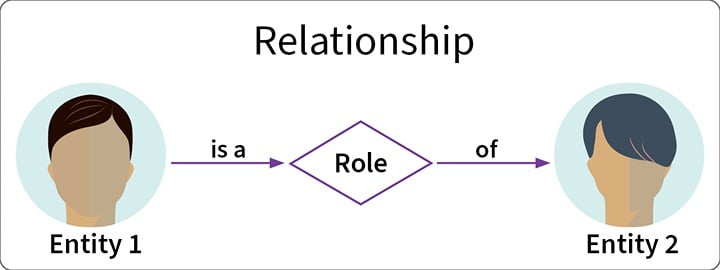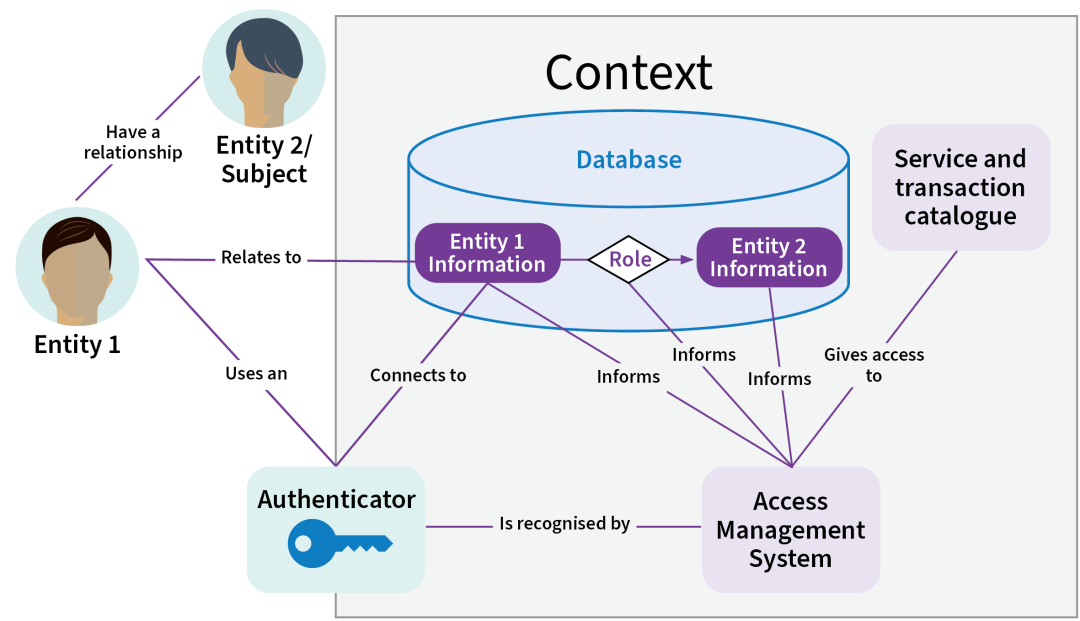Authority to act for another Entity
This guidance describes how authorities to act are represented as relationships and how these can be verified.
Help us create the best guidance possible
If you would like anything added to or clarified in this guidance, email the Identification Management team at identity@dia.govt.nz.
Introduction
There are many times when 1 Entity needs to act on behalf of another Entity.
It is most common when interacting with non-human Entities such as organisations and animals. It is also needed between people — such as when caring for children or those who are unable to do things for themselves.
This guidance describes how authorities to act are based on relationships between Entities and the powers that those relationships might grant.
Find definitions for key terms used in this guidance — Identification terminology.
This guidance will evolve and expand over time to meet the needs of readers and is part of the wider Identification Standards.
Relationships between Entities
The authority to act for another is based on a relationship made up between 2 Entities that are linked by a role.
The relationship also has a direction. If the direction was reversed, the nature of the relationship and the role would change.

Detailed description of diagram 1
This diagram shows the relationship between 2 Entities, the role that indicates the nature of the relationship and the direction of the relationship. Entity 1 has the authority to act for Entity 2.
Agent is an alternative term for those in the position of Entity 1. Subject is the alternative term for those in the Entity 2 position.
Examples of Entity relationships and their roles
- Mrs Smith (Entity 1) is a Parent (role) of Jimmy (Entity 2)
- Apec Trading Company (Entity 1) is an Employer (role) of Joe (Entity 2)
If the Entities were reversed the roles would need to change too. Parent would become Child and Employer would become Employee.
Organisations need to determine how to record the relationships between Entities, in the organisation’s context.
A role can have the same title in multiple contexts, but the definitions and rules related to the role in each of those contexts, can be different.
Types of authority to act
There are 2 types of authority to act:
- role-based authority
- delegated authority.
These 2 types indicate the basis by which roles and the relationship between 2 Entities might be established.
Role-based authority
Role-based authority describes situations where the ability to act on behalf of an Entity is granted through holding a particular role in relation to that Entity. The authority is generally the same for all Entities that hold the role, in a context.
These roles and the powers they grant are usually stated in legislation or policy and will also be context specific. For example — parent will have a different meaning and powers in the contexts of birth registration, health and finance.
Examples of role-based authorities
- Mrs Smith is a Guardian of Jimmy
- John is a Treasurer of Acme Sports Club
- Mr Jones is a Director of Apex Trading Company
- Joe is an Employee of Apex Trading Company
- Sammy is an Owner of Fido the Dog
- John is a Trustee of The Acme Property Trust
- Mr Jones is an Attorney of Jane
- Sammy is an Owner of 1 Smith St
Delegated authority
Delegated authority describes situations where Entity 2 grants powers to Entity 1 — to carry out activities that are within the limit of powers held by Entity 2. Entity 2 cannot grant any more powers than they hold themselves.
Delegated authority is most common in a work context where a manager delegates some or all of their powers to another staff member. This can also occur in other contexts.
The context and system capability will impact the ability for an organisation to facilitate users (such as customers), to delegate their powers to another in this way.
Examples of delegated authorities
- John is a Delegate of Sally, his sister
- Mary is a Delegate of Mr Jones, the Director of the Apex Trading Company
Verifying an authority to act
The 2 types of authority to act have completely different approaches to the verification process.
Verifying role-based authorities
There are formal and informal role-based authorities and the evidence for these can take many forms. The evidence for verifying each relationship needs to cover the 2 Entities, the role and the direction. This is regardless of the form the evidence takes.
If evidence is available, it is most likely to only provide information assurance. Other processes will be needed to bind the information to the correct Entities.
The following are some common aspects of evidence and verification.
Verifying delegated authorities
In a delegated authority the Entity that owns the powers provides authority.
The authentication process is used to access the function to set up the delegation. The successful passing of the authentication process is the basis for verifying that the Subject is authorised to delegate these powers to another Entity.
The authority is only able to be given within the capacity of the organisation’s systems.
To make the delegation of authority process more robust, there should also be a step for the delegated Entity to acknowledge and accept the authority and powers they’ve been given.
Other considerations
There are other things to consider when implementing authorities to act.
- Does the Entity in the real world connect to the Entity in the relationship — especially if the names used are not the same?
- Is the authority still current or has it been superseded or cancelled?
- Are the delegated authorities still relevant or wanted? Check with the Subject.
- When an Entity is no longer current, make sure authorities to act that are held or given have been deactivated or removed. For example, the Entity is deceased, decommissioned or no longer a party to the organisation.
Authorities to Act and access management
Relationships need to be recorded appropriately. This information can be a core component of an access management system.
Being able to utilise the roles and relationships and then apply the authority as business rules can automate the access to resources.
Diagram 2 shows a conceptual view of how roles and relationships can inform other systems within a context.

Detailed description of diagram 2
This diagram has 2 physical Entities which sit outside of the context. The relationship between the 2 Entities exists both in the real world and inside the context.
The Entities:
- are represented by information records that are stored in databases
- use an authenticator to access the context
- are connected by a directional relationship and role.
The mechanism that runs the access management system uses the stored information about the Entities, their roles and relationships to determine the Entities’ access rights and authorisation to the various services and transactions.
In the case of an authority to act, this access can include the ability to do transactions or access services on behalf of another Entity with whom they have a relationship.
Both Entities need to have an Entity Information record, even if the Entity with the authority to act is not interacting with the organisation as a Subject.
Related advice
The following resources are also related to this topic.
- Information Assurance Standard
- Implementing the Information Assurance Standard
- Factsheets on commonly used documents — Department of Internal Affairs
Contact
Department of Internal Affairs Te Tari Taiwhenua
Email: identity@dia.govt.nz
Utility links and page information
Last updated

